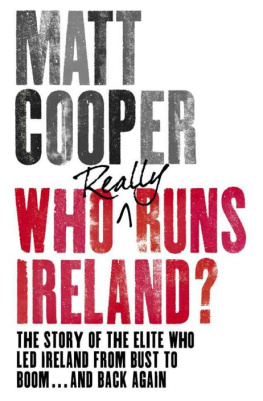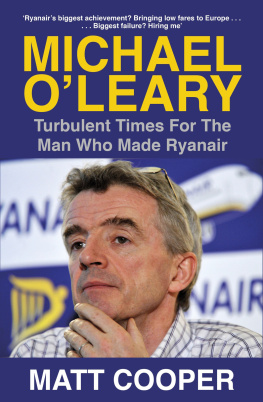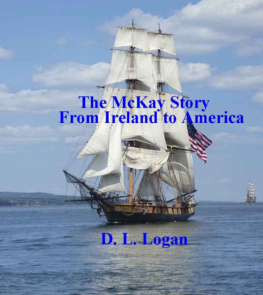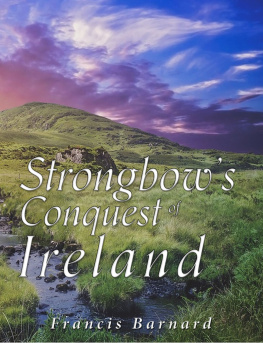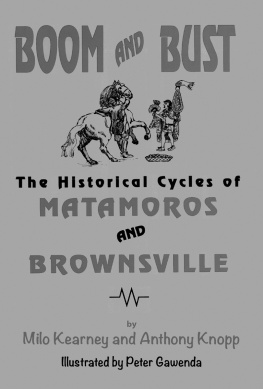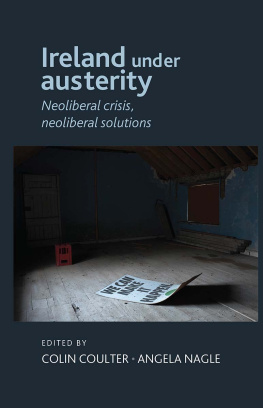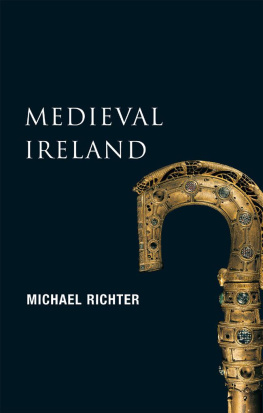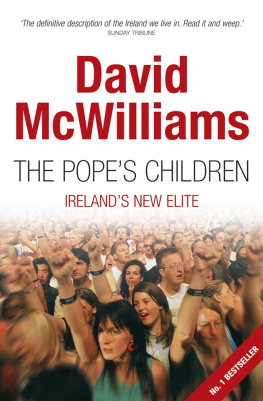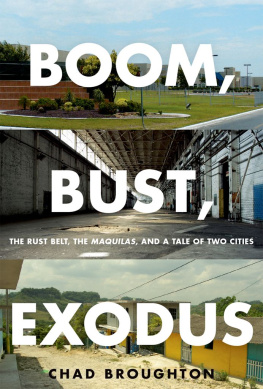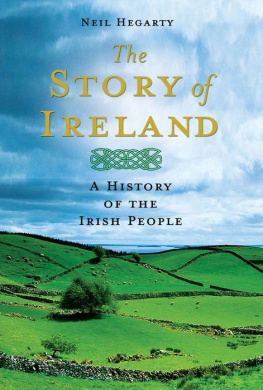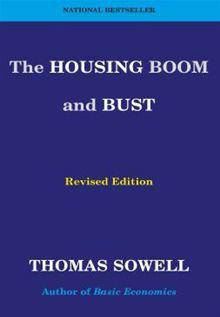Matt Cooper - Who Really Runs Ireland?: The Story of the Elite who Led Ireland from Bust to Boom ... and Back Again
Here you can read online Matt Cooper - Who Really Runs Ireland?: The Story of the Elite who Led Ireland from Bust to Boom ... and Back Again full text of the book (entire story) in english for free. Download pdf and epub, get meaning, cover and reviews about this ebook. year: 2009, publisher: Penguin Adult, genre: Detective and thriller. Description of the work, (preface) as well as reviews are available. Best literature library LitArk.com created for fans of good reading and offers a wide selection of genres:
Romance novel
Science fiction
Adventure
Detective
Science
History
Home and family
Prose
Art
Politics
Computer
Non-fiction
Religion
Business
Children
Humor
Choose a favorite category and find really read worthwhile books. Enjoy immersion in the world of imagination, feel the emotions of the characters or learn something new for yourself, make an fascinating discovery.
- Book:Who Really Runs Ireland?: The Story of the Elite who Led Ireland from Bust to Boom ... and Back Again
- Author:
- Publisher:Penguin Adult
- Genre:
- Year:2009
- Rating:5 / 5
- Favourites:Add to favourites
- Your mark:
- 100
- 1
- 2
- 3
- 4
- 5
Who Really Runs Ireland?: The Story of the Elite who Led Ireland from Bust to Boom ... and Back Again: summary, description and annotation
We offer to read an annotation, description, summary or preface (depends on what the author of the book "Who Really Runs Ireland?: The Story of the Elite who Led Ireland from Bust to Boom ... and Back Again" wrote himself). If you haven't found the necessary information about the book — write in the comments, we will try to find it.
Matt Cooper: author's other books
Who wrote Who Really Runs Ireland?: The Story of the Elite who Led Ireland from Bust to Boom ... and Back Again? Find out the surname, the name of the author of the book and a list of all author's works by series.
Who Really Runs Ireland?: The Story of the Elite who Led Ireland from Bust to Boom ... and Back Again — read online for free the complete book (whole text) full work
Below is the text of the book, divided by pages. System saving the place of the last page read, allows you to conveniently read the book "Who Really Runs Ireland?: The Story of the Elite who Led Ireland from Bust to Boom ... and Back Again" online for free, without having to search again every time where you left off. Put a bookmark, and you can go to the page where you finished reading at any time.
Font size:
Interval:
Bookmark:
from bust to boom... and back again
PENGUIN IRELAND
Published by the Penguin Group
Penguin Ireland, 25 St Stephens Green, Dublin 2, Ireland
(a division of Penguin Books Ltd)
Penguin Books Ltd, 80 Strand, London WC2R 0RL , England
Penguin Group (USA) Inc., 375 Hudson Street, New York, New York 10014, USA
Penguin Group (Australia), 250 Camberwell Road, Camberwell, Victoria 3124, Australia
(a division of Pearson Australia Group Pty Ltd)
Penguin Group (Canada), 90 Eglinton Avenue East, Suite 700, Toronto, Ontario, Canada M4P 2Y3
(a division of Pearson Penguin Canada Inc.)
Penguin Books India Pvt Ltd, 11 Community Centre, Panchsheel Park, New Delhi 110 017, India
Penguin Group (NZ), 67 Apollo Drive, Rosedale, North Shore 0632, New Zealand
(a division of Pearson New Zealand Ltd)
Penguin Books (South Africa) (Pty) Ltd, 24 Sturdee Avenue, Rosebank, Johannesburg 2196, South Africa
Penguin Books Ltd, Registered Offices: 80 Strand, London WC2R 0RL , England
www.penguin.com
First published 2009
Copyright Matt Cooper, 2009
The moral right of the author has been asserted
All rights reserved
Without limiting the rights under copyright reserved above, no part of this publication may be reproduced, stored in or introduced into a retrieval system, or transmitted, in any form or by any means (electronic, mechanical, photocopying, recording or otherwise), without the prior written permission of both the copyright owner and the above publisher of this book
A CIP catalogue record for this book is available from the British Library
ISBN: 978-0-14-193230-9
To my family, Andie, Aimee, Millie, Zach and Harry, and, of course, Aileen
PART I
The media baron
PART II
The Taoiseach
PART III
Tax is for the little people
PART IV
They havent gone away, you know
PART V
Bringing down the house
PART VI
Playing with the big boys
PART VII
Two barons fall to earth
PART VIII
The failures of regulation
PART IX
After the boom is over...
PART X
The comeback kings
Monday, 29 September 2008, was the evening when the most powerful people in Ireland felt almost powerless. They were grappling with a once-in-a-lifetime crisis, on a scale none of them had ever expected to experience, or had even feared. The continued existence of the Irish banks was under threat and with it much of the countrys future. The standards of living that our citizens had come to enjoy hinged on the decisions that these men would take.
The Taoiseach, Brian Cowen, and his Minister for Finance, Brian Lenihan, sat in Government Buildings along with the governor of the Central Bank, John Hurley, the chief executive of the Financial Services Regulatory Authority, Patrick Neary, and the secretary generals of the departments of An Taoiseach and Finance, Dermot McCarthy and David Doyle. They were joined soon by the attorney general, Paul Gallagher. A retinue of their advisers flocked around the building, popping in and out when asked. Almost overwhelmed by what was happening, they were seeking information, offering and assessing options, and taking calls from people with advice but they were also trying to ensure that nobody outside found out what was happening before the necessary decisions were taken, implemented and announced.
Power resided with these people, but so did extraordinary responsibility. These men had to battle to establish the governments sovereign responsibility for our future. What if they were to choose the wrong course of action? What if they were to do nothing at all? Would that be for good or bad?
I had to inform the minister that the risks to financial stability were becoming unacceptably high, with knock-on effects for the wider economy, Central Bank governor John Hurley explained days later. A major consideration was that the highly concentrated nature of the Irish banking system created a high risk of contagion. Decisive action to protect the stability of the economy and its financial system was needed.
In plain English, that meant that some banks were running out of money. If one were to go out of business, as seemed likely, the risk became that much higher that this could happen to all of them, although and here was the rub that was by no means a certainty. If the main banks closed suddenly, and citizens and companies were unable to get at their cash, there could be riots in the street. External forces seemingly had taken control of Irelands economic destiny and, by extension, its social stability.
The bankers were outside, sitting in the nearby Sycamore Room. The four men there represented the countrys two biggest and most important banks: the chairmen of Allied Irish Banks and Bank of Ireland respectively, Dermot Gleeson and Richard Burrows, and their chief executives, Eugene Sheehy and Brian Goggin.
Sheehy and Goggin had come together at 6.30 p.m. to ring Cowen, requesting the meeting. They feared the imminent collapse of Anglo Irish Bank and possibly Irish Nationwide Building Society, and that such an event would create a domino effect, sweeping away their banks too. Anglo shares had fallen 46 per cent that day alone, the latest and most significant in a series of major price falls. The news got worse within minutes of the phone call. Just before 7 p.m., after the Irish markets had closed, the US House of Representatives delivered a shock rejection to the Bush administrations $700 billion plan to re-stimulate the US economy; the Dow Jones fell sharply, ending by 9 p.m. Irish time with the highest one-day fall of all time and the worst performance since Black Monday in October 1987.
The following day threatened to be dreadful for the Irish banks unless action was taken. Irish banks were massively reliant on borrowed money from overseas, and regularly had to borrow new money for old loans that were due for repayment. Suddenly this money was less readily available, and the fear was that nobody would lend to any bank in Ireland if one or two were seen to die. Liquidity money in the system, like oil lubricating a machine is essential to the banks and to the overall economy. If it dried up, as suddenly looked possible, it would not merely ruin the banks but also the entire economy. AIB and Bank of Ireland provided the bulk of this cash flow, which is why they were regarded as being of systemic importance.
The bankers, very experienced, tough men, responsible for tens of thousands of employees, billions in shareholders investments, and the deposits and loans of millions of customers worldwide, had arrived at Government Buildings around 9.30 p.m. They were made to know their place: it was two hours before they were granted an audience with Cowen and his entourage.
The government was not unprepared. For weeks it had been in crisis mode, although it hid this from the public for fear of undermining public confidence. The problems were multiple: the instability of international markets, made worse by the collapse in mid-September of massive US investment bank Lehman Brothers and the expensive rescue of insurance giant AIG, something that made money more expensive and harder to get; the increasing belief that Irish banks had lent too much money for property speculation and that this would never be recovered; a flight of deposits out of the Irish banks, Anglo in particular, from which big businesses were moving hundreds of millions of euro at a time.
Expert groups had been set up to prepare contingency plans. EU Commissioner and former finance minister Charlie McCreevy was consulted by Lenihan, and others were canvassed as well. On Saturday, 20 September, Lenihan made a sudden announcement that the state guarantee on all bank deposits was to be increased from 20,000 to 100,000. He accompanied this with the assertion that the Irish banking system was full of soundness and stability. I want it to be known that the government is confident about the strength and resilience of the Irish financial system, he said.
Font size:
Interval:
Bookmark:
Similar books «Who Really Runs Ireland?: The Story of the Elite who Led Ireland from Bust to Boom ... and Back Again»
Look at similar books to Who Really Runs Ireland?: The Story of the Elite who Led Ireland from Bust to Boom ... and Back Again. We have selected literature similar in name and meaning in the hope of providing readers with more options to find new, interesting, not yet read works.
Discussion, reviews of the book Who Really Runs Ireland?: The Story of the Elite who Led Ireland from Bust to Boom ... and Back Again and just readers' own opinions. Leave your comments, write what you think about the work, its meaning or the main characters. Specify what exactly you liked and what you didn't like, and why you think so.

